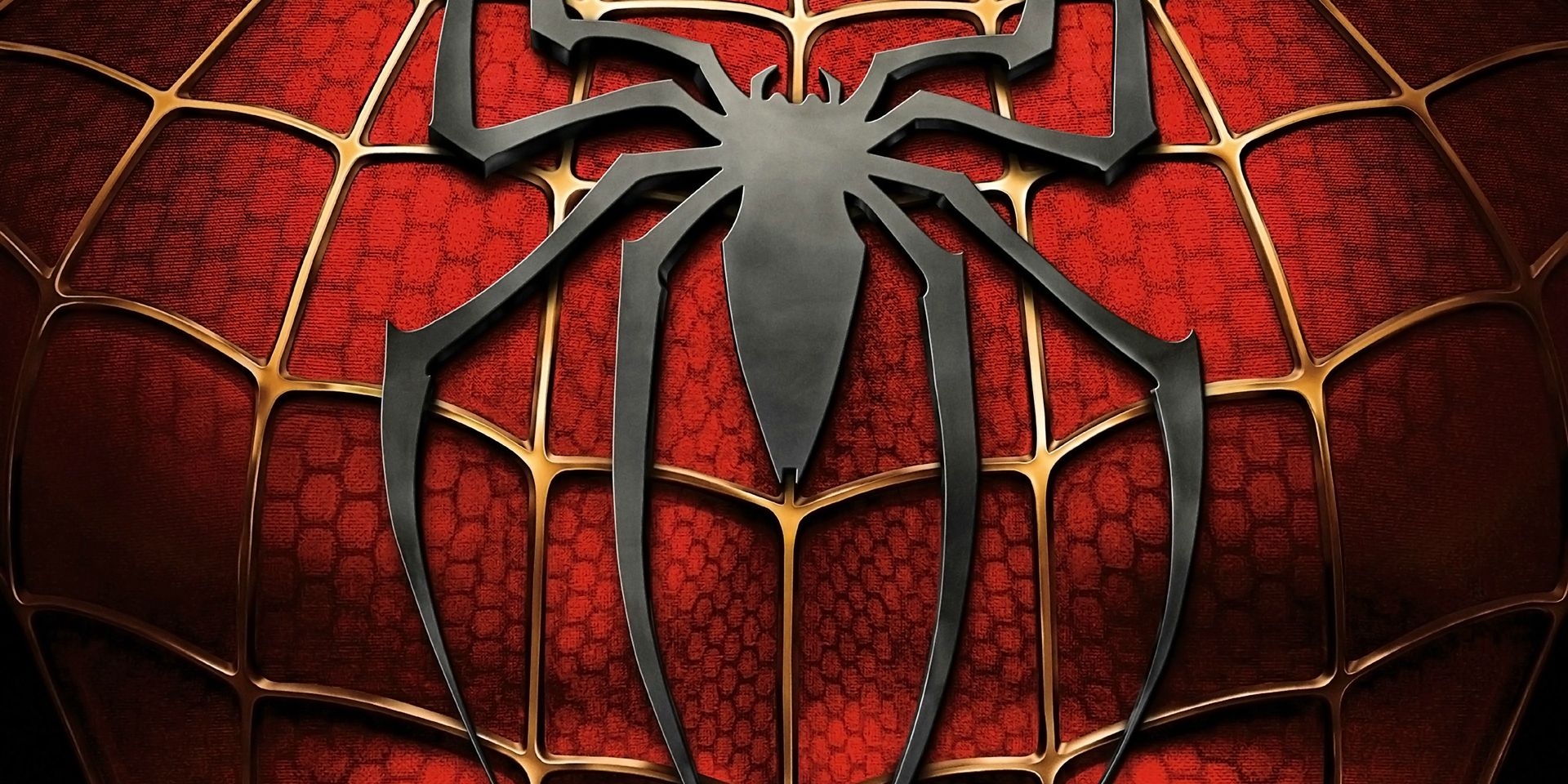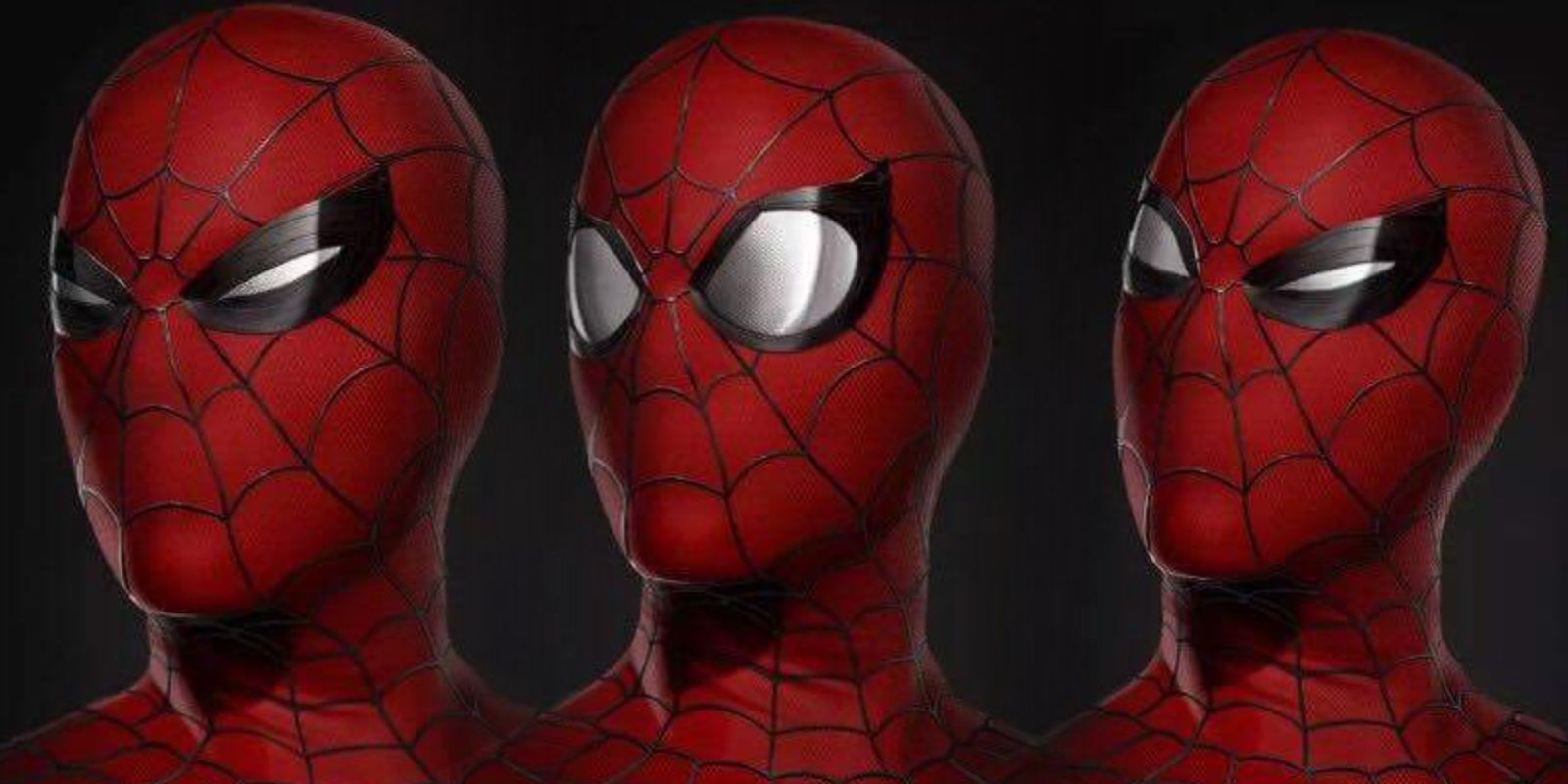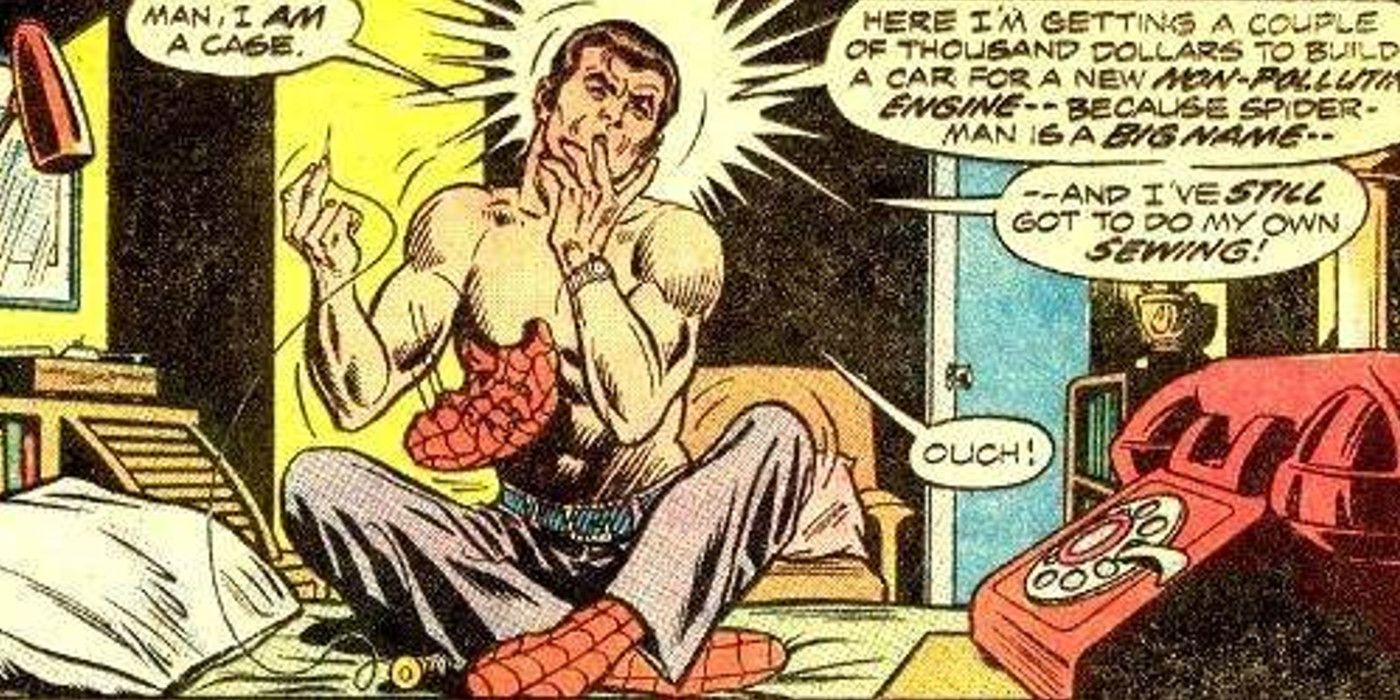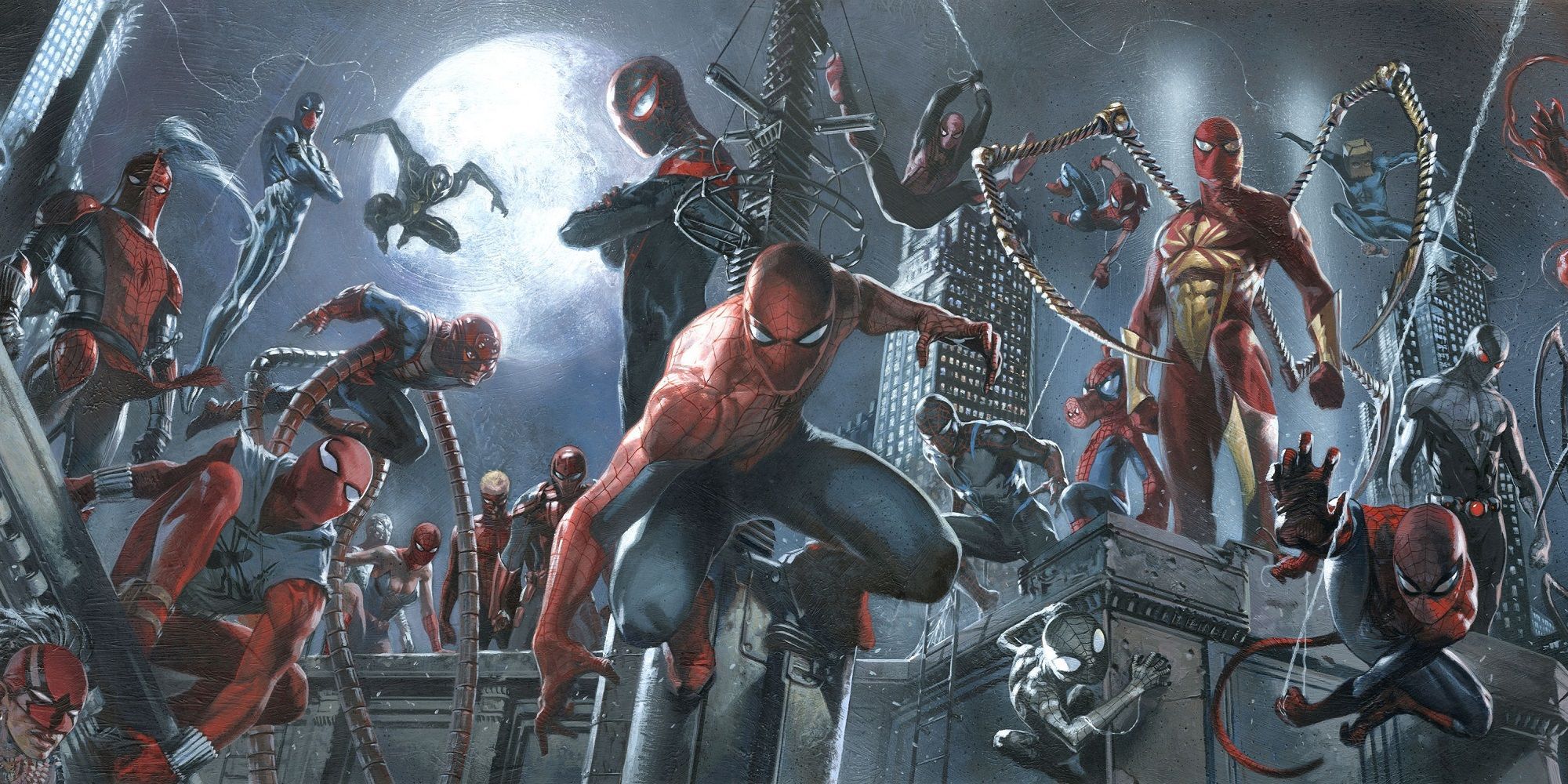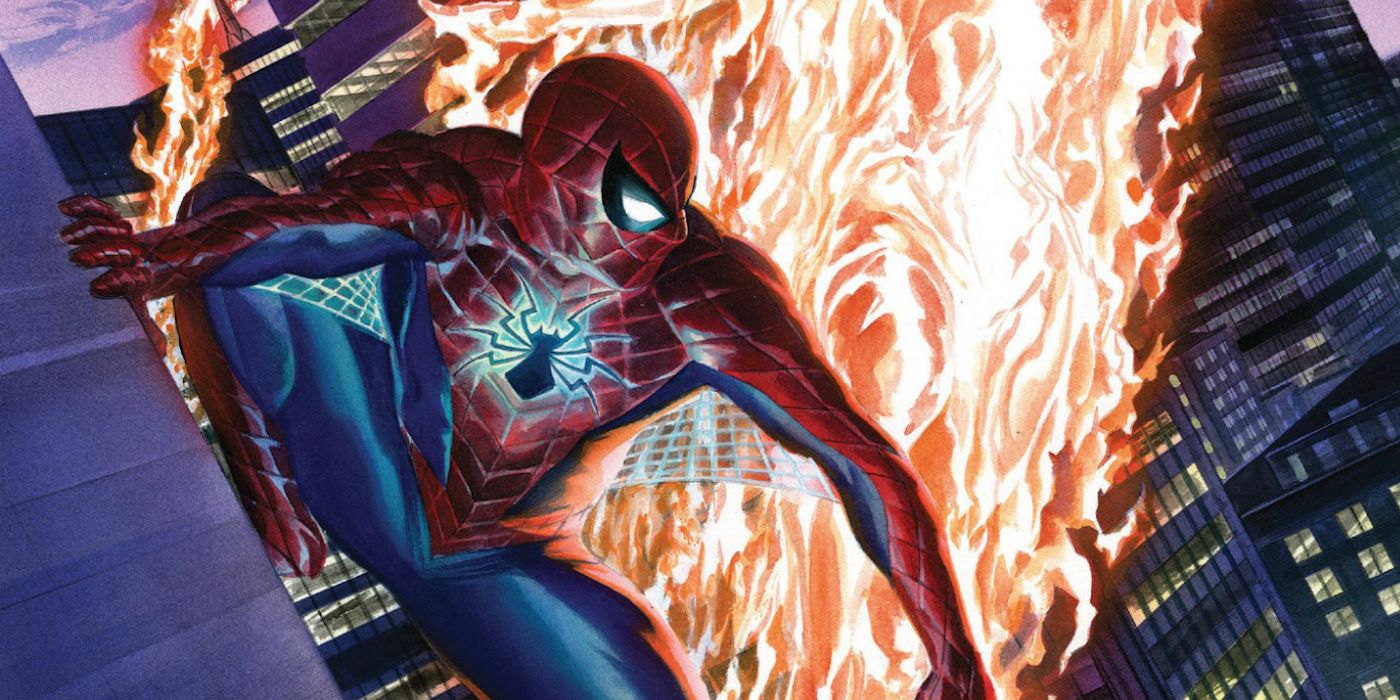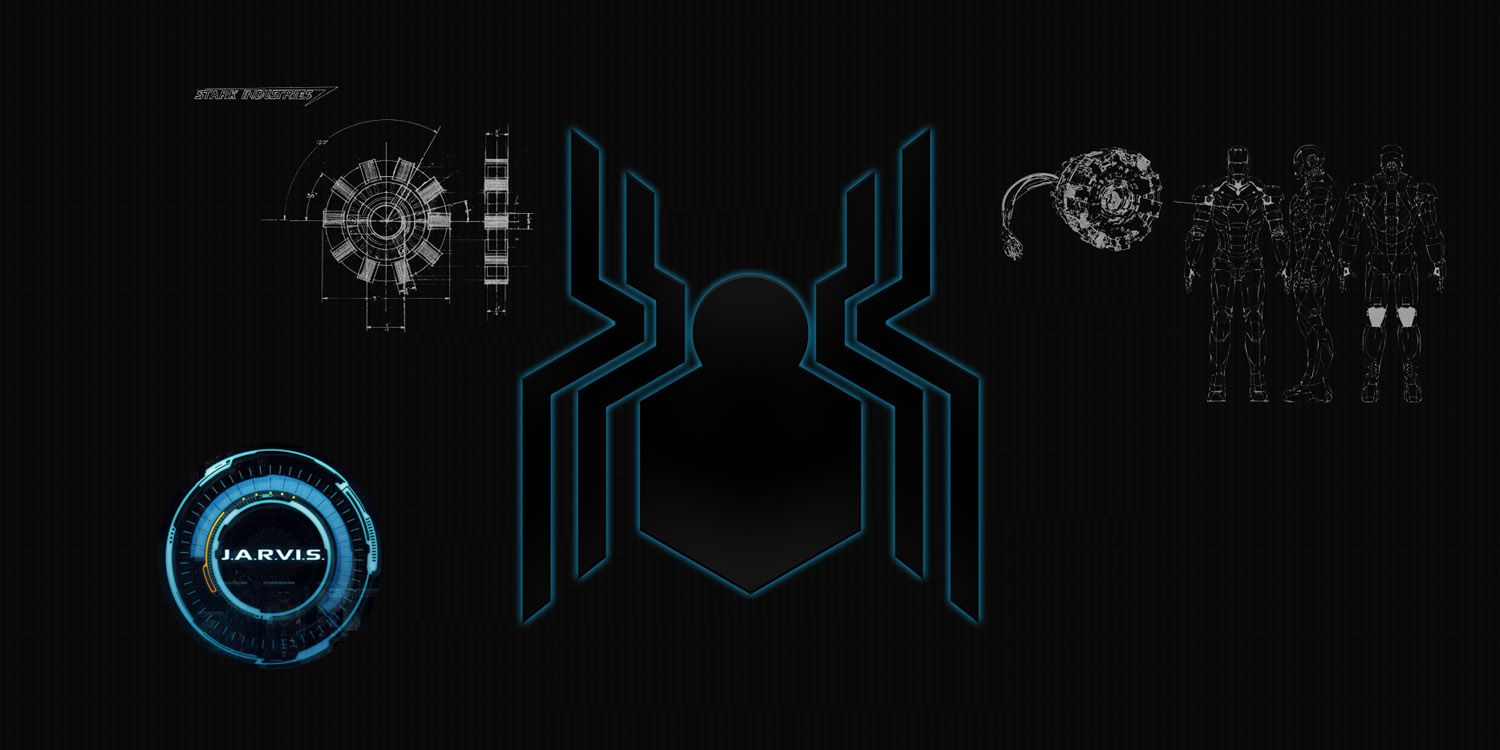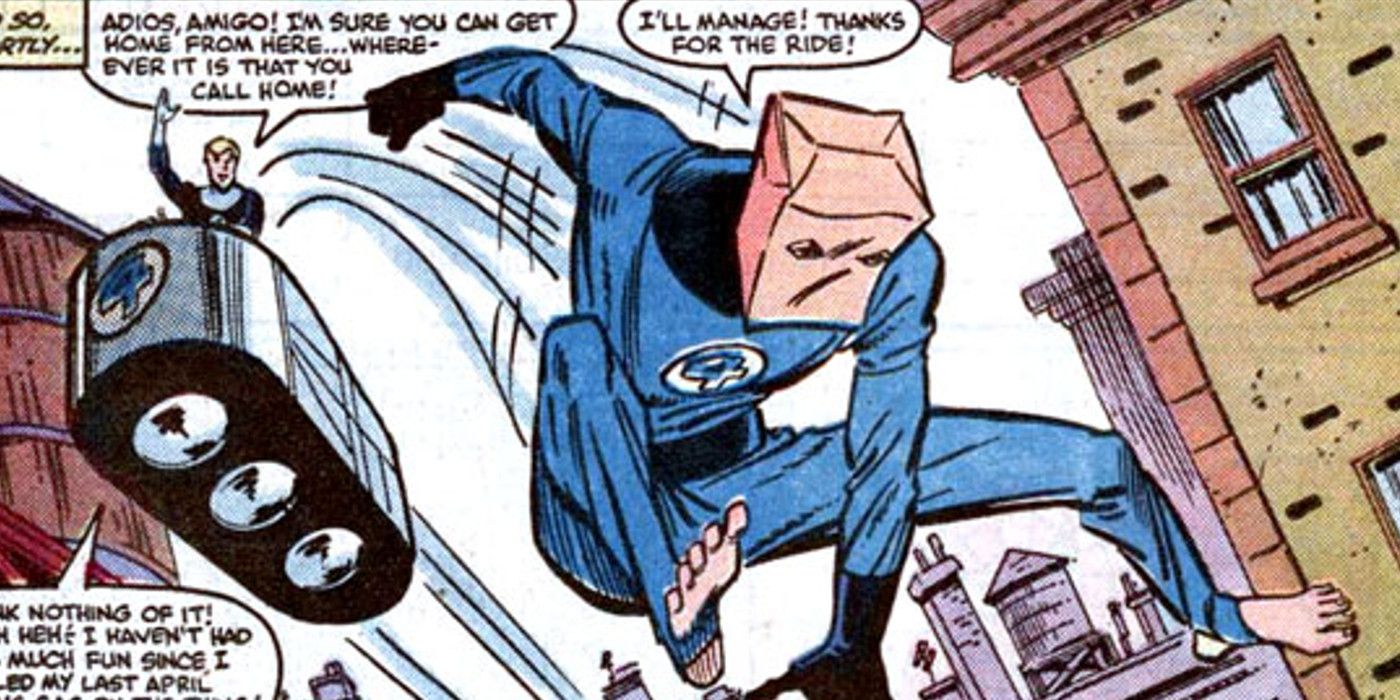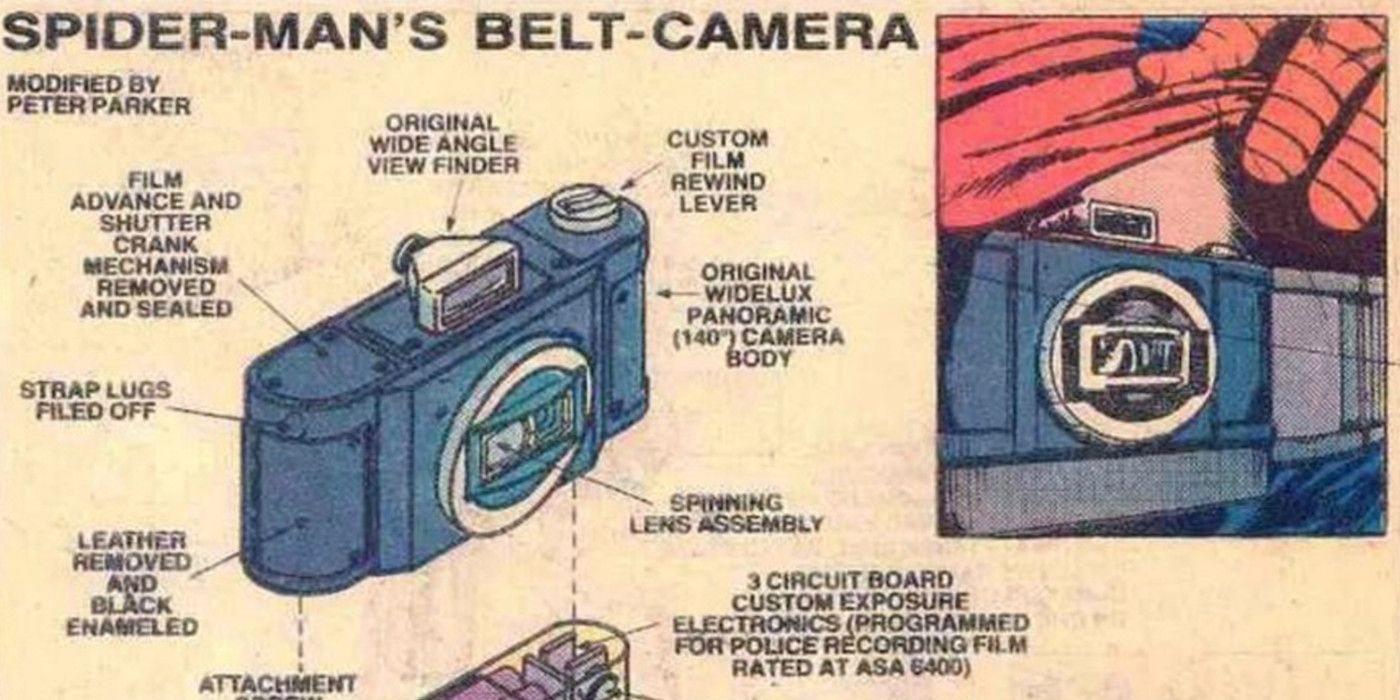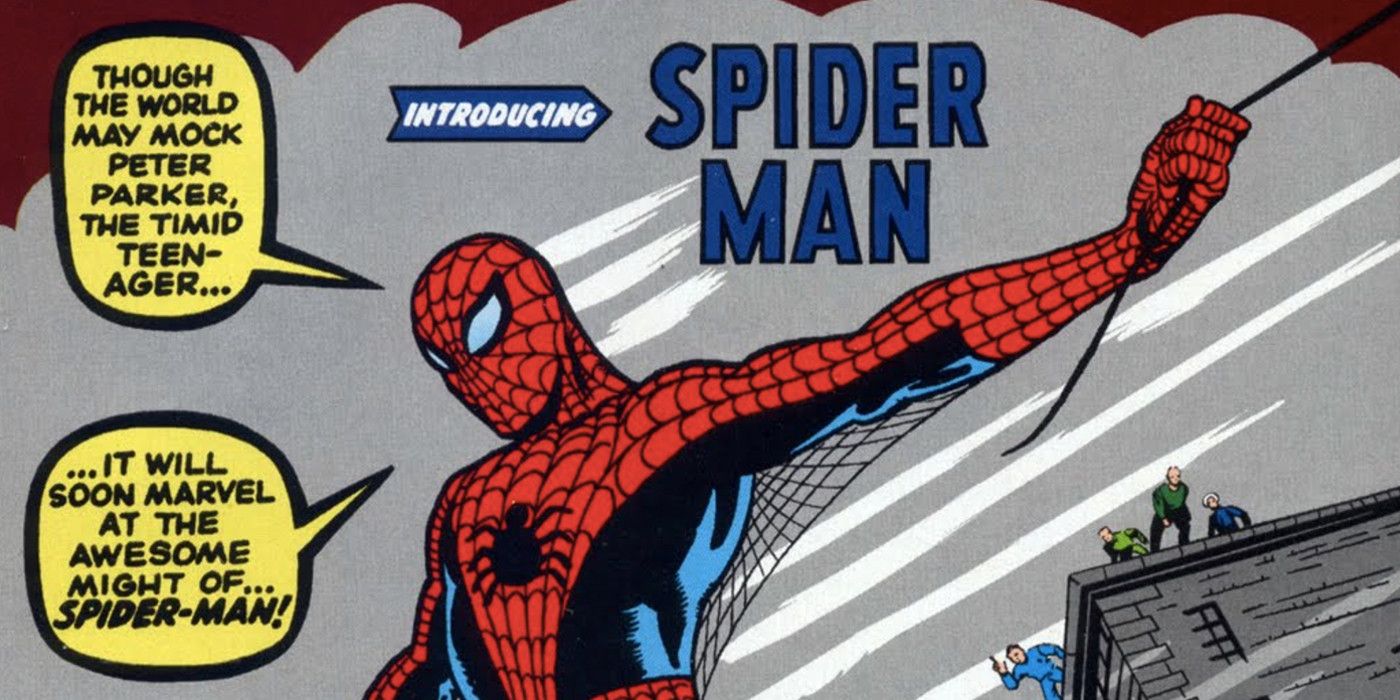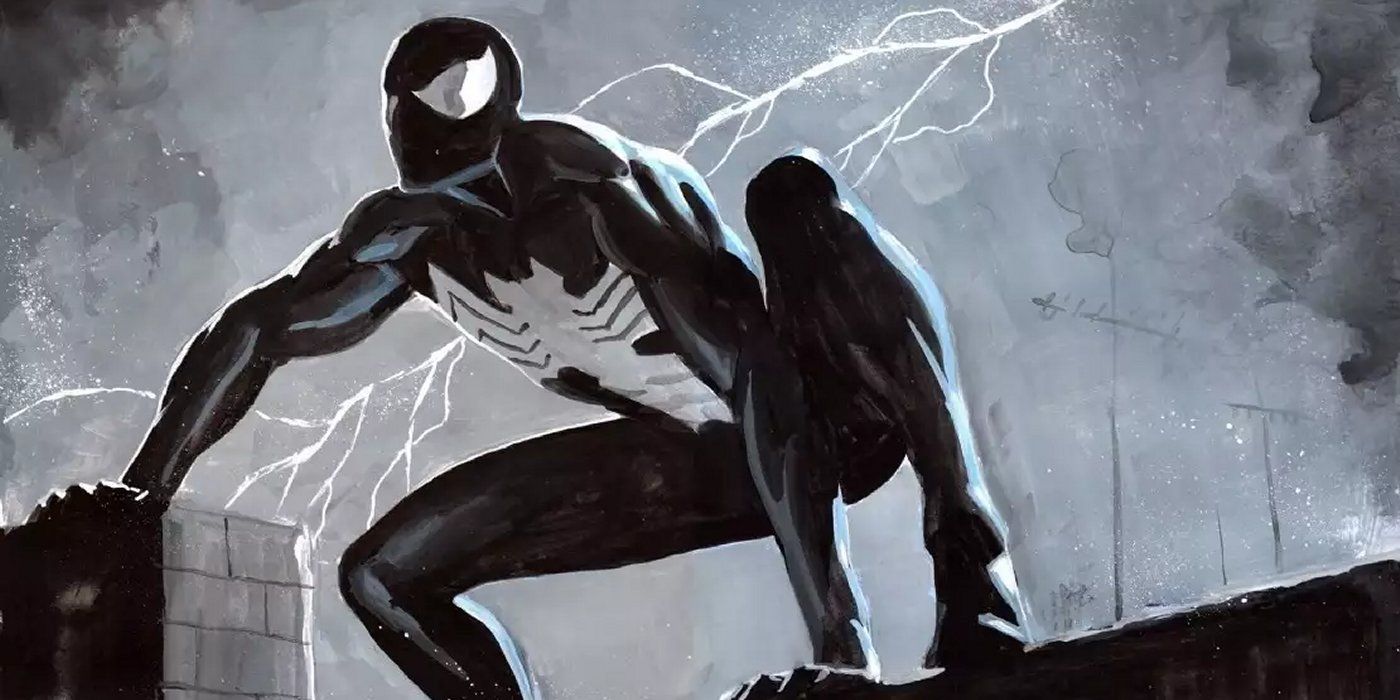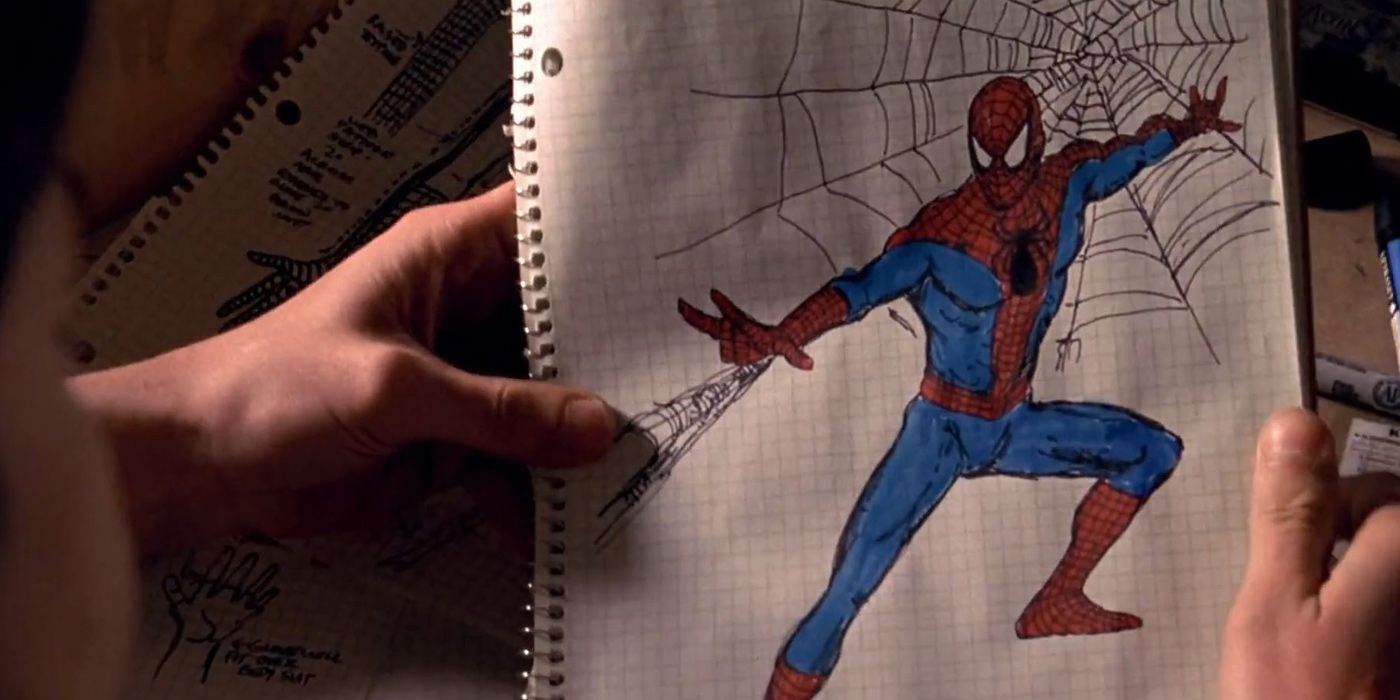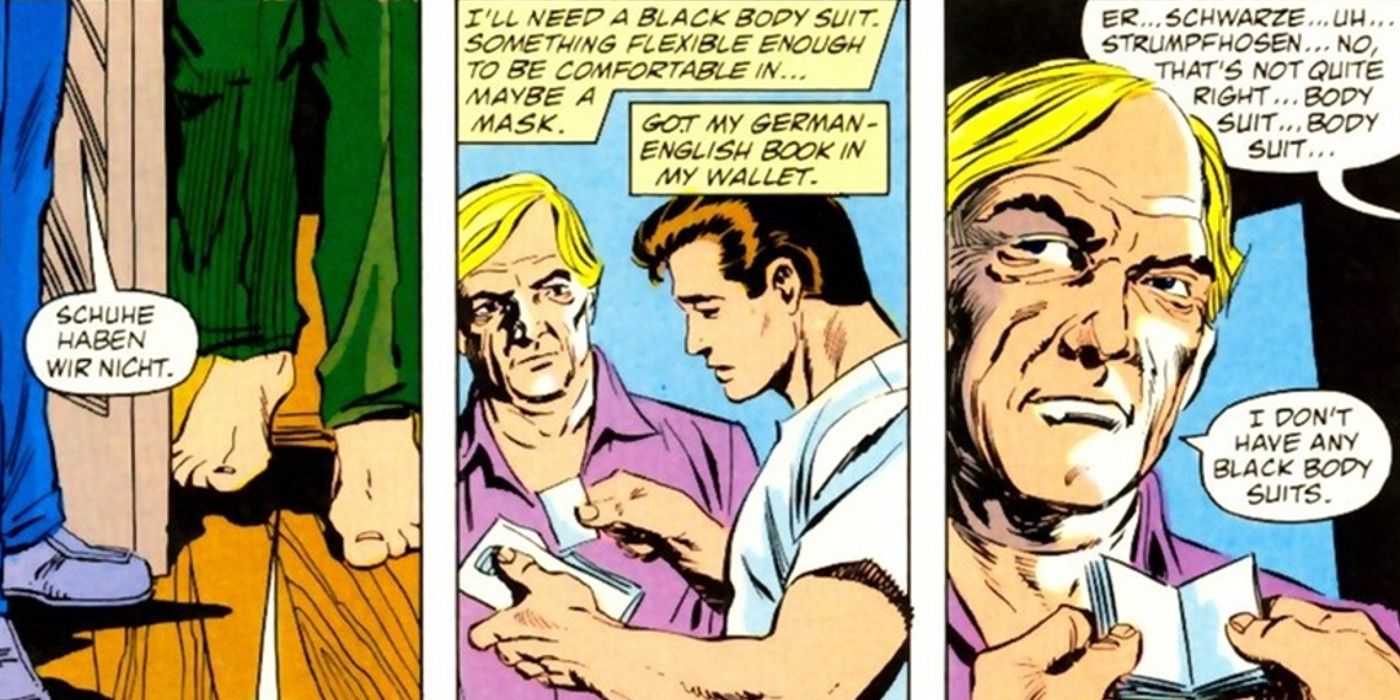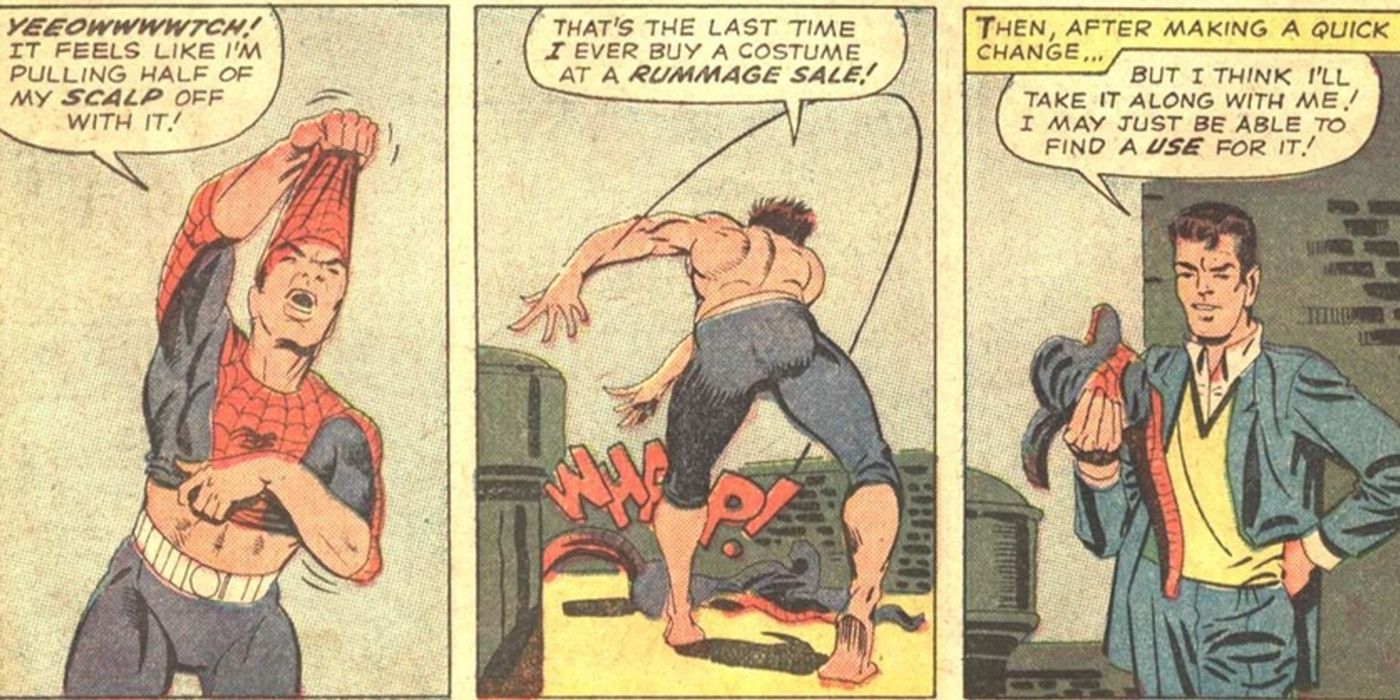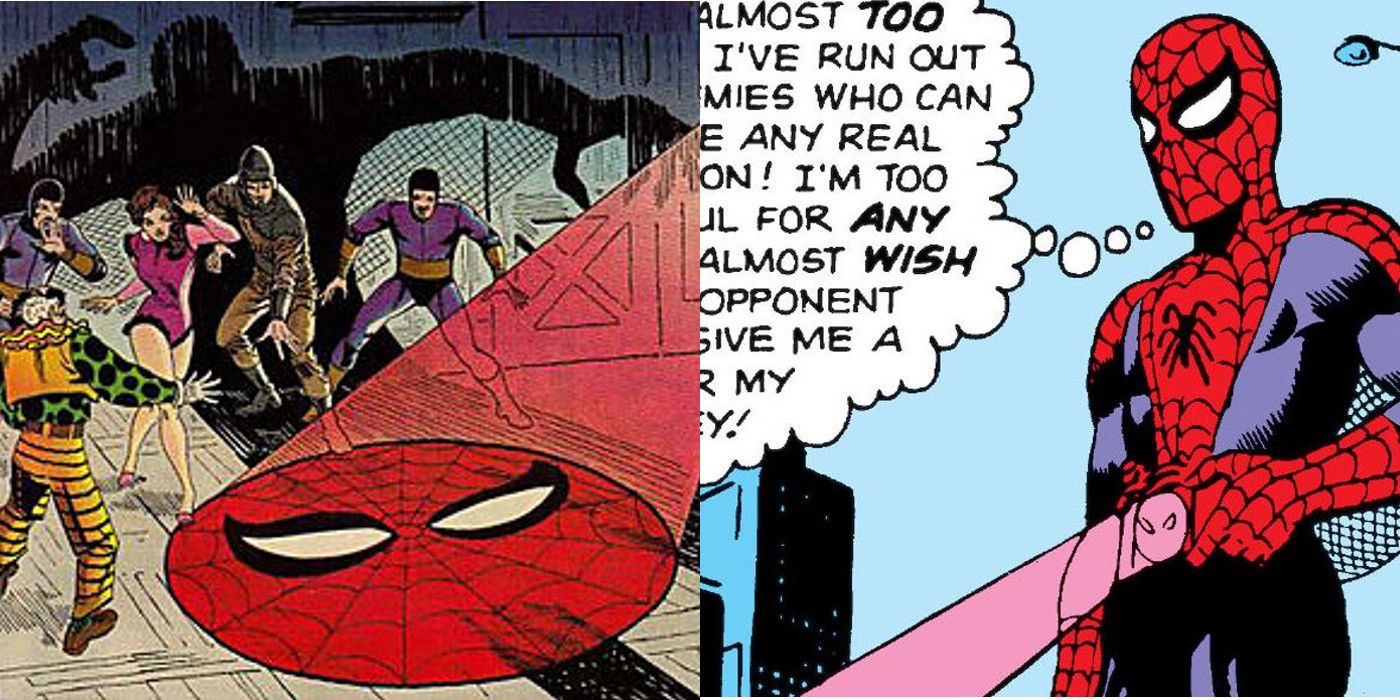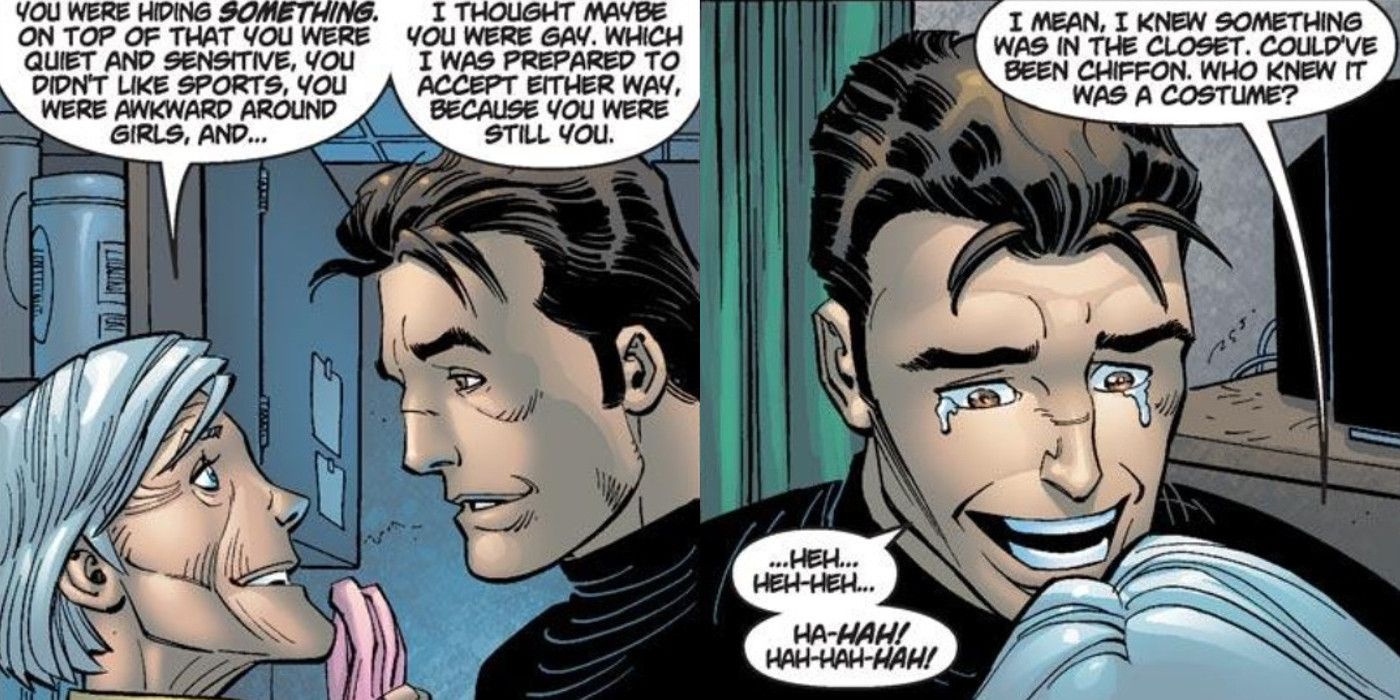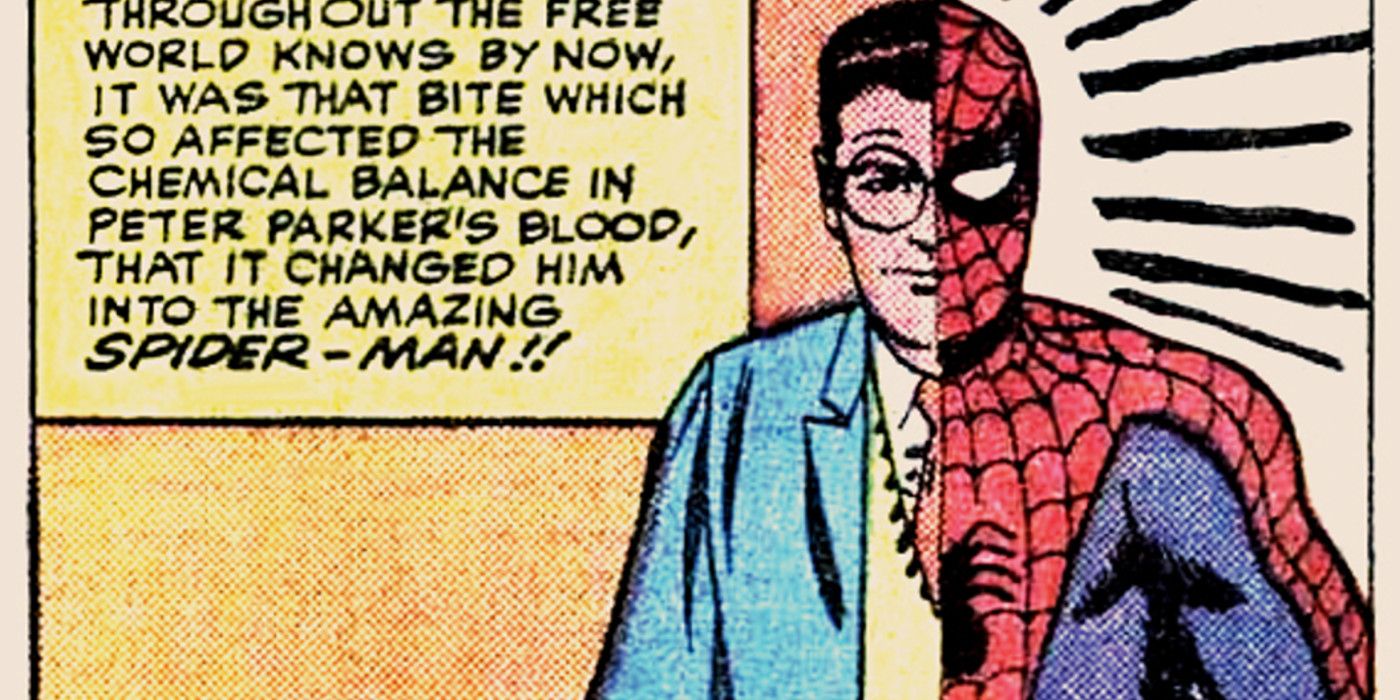The suit is the secret. In the fifty-five years since his Marvel Universe birth, Spider-Man has turned the signature red-and-blue costume into a fixture of the comic book world, a symbol of the American way, and a hero for adolescents of every generation. From his comics debut in 1962 to his big-screen arrival in 2002, there have been countless iterations of the web-slinger’s famed costume. Though the suit has undoubtedly evolved over the years (often with less than satisfactory results), its core charm remains unchanged.
Like all things we come to love, it’s easy to take the suit for granted. From gadgets hidden beneath the spandex to the origins of the webbed underarms, the unexpected history of the symbiote suit, and the humbling means by which Peter Parker makes his costume, there’s a lot to learn about the wall-crawler’s heroic look.
Here are 15 Things You Didn't Know About Spider-Man's Suit:
15. The MCU Suit Is The First To Have Reactive Eyes
However expressive his face may be in the comics, Spider-Man has remained stoic on the big screen. From Tobey Maguire’s debut as the webslinger to Andrew Garfield’s showcase in 2012, live-action Spider-Man has always had oversized and unmovable eyes. The Deadpool movie reopened the conversation with Wade Wilson’s expressive face-mask, and it appears the head honchos at Marvel liked what they saw.
This update on the character caught viewers off-guard when Tom Holland’s Spidey first debuted in the Civil War trailer. Fans cried “poor CGI!” to explain away the unexpected change. As Homecoming reveals, however, Spider-Man’s new eyes aren’t just windows into his superhero soul. Through the usage of camera-like shutter eyes, they also reflect his state of combat, whether he's climbing a wall or setting web snares for his enemies. “Spider vision” is a hallmark design of Tony Stark’s web-slinging suit.
14. Peter Hand-Sewed Most of His Suits
Spider-Man embodies the contradiction at the heart of superheroes. Once you strip away the powers and the sheer will, you’re simply left with a guy in a costume. Hey, even Bruce Wayne spray-painted his first suit in Batman Begins. More than any other superhero, however, it’s Spider-Man who carries the biggest burden.
Why? The guy sews his own suits. For time immemorial, poor Peter Parker has locked his bedroom door, reached for the needle and thread, then set about patching up his red and blue costume like Betsy Ross in 1776. However ironic the task may be for a lad of such promise, it’s a humbling act that keeps Peter Parker down to Earth, the true New Yorker that he is. That doesn’t keep him from hating it, of course, and in Amazing Spiderman #4 (September 1963), he lets us hear it: “This is ridiculous! I’m no cotton pickin’ seamstress! But I’ve got to do it myself!”
13. There Have Been Dozens of Different Versions
With over 55 years of web-slinging service, it’s hard to put an exact number on Spider-Man’s suit collection. Rest assured that he has had at least several dozen major suits, ranging from your standard red-and-blue to the freakish Spider-Man 2099 costume. Replete with talons, claws, and a Spartan helmet, the futuristic 2099 suit would easily be his most fearsome if not for the Iron Spider designed by Tony Stark himself. More Doc Ock than Spider-Man, this super-suit was awarded to Peter after he revealed his true identity to Iron Man himself. Replete with stinger claws, rocket-powered boots, and a sturdy exoskeleton, the Iron Spider took Peter Parker’s game to the next level.
Unfortunately, these highlights were leveled by equally-impressive lowlight suits like the Spider-Armor MK II and the Spider-Man 2211 costume, both of which make a mockery of the beloved web-slinger.
12. The Mark IV Costume Was Unstoppable
We could talk all day about Peter Parker’s most awe-inspiring suits, but if challenged to spotlight just one of them, we’d nominate the Spider-Armor MK IV. This thing is a doozy, and it’s all the more impressive because Peter Parker designed it himself, free from Mr. Stark’s handholding.
Following the chaos of the Secret Wars, the web-slinger set about building something that could not be destroyed. Using the full resources of Parker Industries, Spidey built a fire-proof, bullet-proof, and practically death-proof battle suit. He could plummet off a rooftop sans webbing and survive the fall, bearhug the Human Torch and feel a chill, and brush off the sonic-sound of Clayton Cole like he was turning down the tunes on Spotify. Replete with active camouflage and advanced web-shooters (that take multiple forms), the MK IV is not to be challenged.
11. The MCU Suit Has GPS, Auto-Fit, And Hundreds Of Web Combinations
Expect to encounter the most advanced live-action Spider-Man suit in Homecoming. Thanks to Tony Stark, it surpasses even what Peter Parker wore in Civil War. Rather than being made from pins, needles, and an adolescent’s imagination, Stark’s Spidey suit is optimized for the superhero lifestyle.
For the first time in Peter Parker’s onscreen presence, that massive spider on his suit’s chest is more than ornamental. Like Falcon’s Redwing in Civil War, it now detaches from the costume and functions as a personal drone. In addition to featuring a high-tech GPS, multi-purpose web shooters (that include explosive web traps amongst hundreds of other web combo possibilities), spider vision, and auto-fit, the Homecoming suit has its own JARVIS-like operating system (named ‘Karen’ in the movie). As Peter Parker discovers, learning how to communicate with the AI program is nearly as complicated as working the entire suit -- especially when the Training Wheels protocol is disengaged.
10. The “Amazing Bag-Man” Costume Was A Real Thing
The “Amazing Bag Man” costume (or “Bombastic Bag Man,” whichever your prefer) is a disgrace. Though it sounds like the stuff of depraved fan fiction, it’s such a real thing that the title rightly belongs in quotes. Here’s how it came to be:
In the midst of his struggle with the symbiotic suit, Peter Parker sought out the expertise of Reed Richards himself. Not only did he want answers on the symbiote, but he wanted to get rid of it. Sound scientific research takes time, of course, so Peter had to shed the suit for Richards to work his magic. In lieu of any functional suit, Peter got his hands on an old school Fantastic Four costume. Fighting entirely barefoot, Peter concealed his identity with a paper bag while rocking a “Kick Me” sign that Johnny Storm slapped on the back. It was a low point for the entire Spider-Man brand.
9. Peter Tucked His Camera Belt Under His Suit
Long before he became a titan of the corporate world and founded Parker Industries, Spider-Man was a starving artist. In-between bouts of crimefighting, he paid his way by snapping high-profile pictures of his enemies caught in the act and delivering the goods to J. Jonah Jameson. Rather than wearing a fanny pack or slinging a camera over his suit, Peter Parker used to use a utility belt that positioned the camera right at the front of his waist.
Tucked neatly under his suit, the belt-camera was given prime access for the web-slinger. As Peter himself excitedly said, “the whole contraption fits under my shirt, where it’s out of sight, and doesn’t interfere with my movements!” Has there ever been a more earnest superhero than Spider-Man? We think not.
8. The Original Design Had Webbed Arms
As with the shutter eyes, much was made about Spider-Man’s webbed underarms in the Homecoming trailer. Some fans were intrigued by the addition, while others balked at the deviation from Spidey’s usual on-screen getup.
As it turns out, the original Spider-Man costume featured these exact underarms. In his Amazing Fantasy #15 debut, Spidey swung onto the scene with a fresh costume courtesy of designer Steve Ditko. As the opening panels of the story reveal, Peter Parker designed the suit not to be a superhero, but to be a more stylish and presentable wrestler. Hearing the siren call of TV producers promising his high-flying act would “be a smash on Ed Sullivan’s show,” Peter sewed the suit and added in the webbing for purely decorative reasons. Beyond that, Steve Ditko never attempted to explain their practical purpose, but thankfully, Homecoming manages to prove their worth.
7. The Symbiote Suit Idea Came From A Young Fan
After Steve Ditko’s introductory suit in 1962, the next 20 years would see only two major permutations to Spider-Man’s costume. John Romita, Sr. dialed down the red-and-black of the initial suit and replaced it with the more vibrant red-and-blue pattern that has come to define the character.
In 1984, Spider-Man’s third suit hit the market: The Symbiote. As much as Marvel would have liked to take credit for the idea, the concept for the black suit came from a young Spidey fan named Randy Schueller. Two years after Marvel acquired the idea (for a paltry sum of $220), the Symbiote appeared in Secret Wars, much to the displeasure of many fans. To appease the audience backlash to Spider-Man’s new black suit, the writers wrote in the storyline where Reed Richards helped Peter separate from the symbiote.
6. Modern Physicists Developed A Spidey Suit Formula
As the old story goes, Peter Parker gets bitten by a spider, absorbs its powers, and becomes a human-arachnid hybrid. The tale may be the stuff of superheroes, but the science is somewhat grounded in reality. According to The Institute of Physics, a team of engineers has actually built the formula for a modern-day Spider-Man to use.
Through studying the gravity-defying qualities of geckoes and spiders, scientists identified that “Van der Waals forces” (the synergy of molecules in close proximity) are the energy source that lets the eight-legged creatures hang from the ceiling. These same engineers have found a select amount of adhesive substances that would essentially function as “microscopic Velcro” and let humans become a real-life Spider-Man. According to Professor Nicola Pugno, physicist at Polytechnic of Turin, Italy, “There are many interesting applications for our theory, from space exploration and defense, to designing gloves and shoes for window cleaners of big skyscrapers." Mission Impossible: Ghost Protocol, anyone?
5. Peter Borrowed His Costume From A Berlin Shop
There are a bevy of cardinal sins for superheroes, but chief among them is leaving the house without easy access to your costume. In the Spider-Man v Wolverine one-shot, Peter Parker committed this exact sin when he found himself on assignment with the Daily Bugle in Germany. Peter was on hiatus from his web-slinging responsibilities and foolishly left his trusted suit at home.
This proved to be a mistake. When his buddy Ned Leeds got murdered at their hotel, and Wolverine showed up to kill the criminals, Peter felt useless. “With great power comes great responsibility,” he thought, before heading to a local Berlin costume shop and requesting (in broken German) to get his hands on “a black body suit, something flexible enough to be comfortable in…maybe a mask.” After the store owner strung him along a bit and pretended to have no understanding of English, he pulled out his own son's Spider-Man suit and handed it over. When Peter saw that it was red and blue, the color pattern of the good ol’ days, he put his head on the counter and cried, “I want to die.” Perhaps this emotional moment was the inspiration for emo-Peter in Spider-Man 3.
4. Peter Once Stripped Off The Suit Mid-Combat
Peter Parker’s suit travails continued when Aunt May took his spare costume to keep him from continuing his perennial fascination with Halloween. To make matters worse, Peter had already abandoned his original costume during a fight against a Spider-Slayer robot. In Amazing Spider-Man #26, writers Steve Ditko and Stan Lee find a backup plan and have their hero buy a replica of his costume from a local costume shop. Peter throws on the red-and-blue suit immediately, then jumps off a building declaring, “I might as well face it…being Spider-Man is just plain habit-forming! It’s like going out with girls! I can’t give it up!”
Peter Parker, lady killer. Unfortunately, the suit’s quality doesn’t match its wearer’s enthusiasm, and it steadily shrinks as he bounds about the city. From large to medium to child-sized, the suit slowly constricts until Peter rips it off after the battle and declares, “that’s the last time I ever buy a costume at a rummage sale!”
3. His Suit Controls the Spider-Signal
Despite his enhanced senses, strength, and vision, early Spider-Man used the light of his Spider-Signal to sneak up on enemies and see in the dark. However cool this spotlight feature may be, it has been known to have the unfortunate effect of killing all element of surprise. Still, this signature device first appeared in The Amazing Spider-Man #3 and has clung to relevance over the last five decades, even making a post-credits appearance at the end of Captain American: Civil War.
While the other famous superhero signal, the Bat-signal, relies on Commissioner Gordon to fire it up, Peter Parker’s glowing visage is stored right on his belt. While a more recent version of the Spider-Signal allows J. Jonah Jameson to reflect it from the police station, Peter can use the device at his own convenience.
2. Aunt May Made Gay Jokes About Peter’s Suit "Closet"
Authors J. Michael Straczynski and John Romita Jr. ask the question in Amazing Spider-Man #38. Or rather, they start “The Conversation,” as this issue is formerly known. What would happen if Aunt May found out that her dear Peter Parker were the famed Spider-Man?
Peter tells her the truth, and explains that his investment in the superhero identity exists to avenge the death of Uncle Ben (for which he feels eternally responsible). Aunt May not only understands his guilt but shares in it, revealing her own feelings of responsibility for not protecting her husband. These sentimental moments transition into something less predictable when Aunt May admits, “to tell the truth, Peter, for a while I thought you were gay…I mean, I knew something was in the closet. Could’ve been chiffon. Who knew it was a costume?”
1. Steve Ditko's Suit Showed Peter In "Split Face"
That’s not Harvey Dent. It’s Spider-Man’s Split Face, the dual identity Steve Ditko deployed to help Peter Parker shed his boyish life and accept his destiny as the web-slinger of New York City. In the early issue of Amazing Spider-Man #2, Peter is shown with his school-boy glasses and his mask, as his spider senses impel him to abandon his civilian clothes and find the source of the mysterious electrical impulses: “The part of me which is Spider-Man is reacting suspiciously to them! I’ve got to check this out!”
For another twenty issues, or so, Ditko relied on the split-face trope to show Peter’s struggle with his true identity. While he initially depicted the rift on Peter’s face, Ditko steadily upped the ante to split-body, showing Spider-Man’s torso and clenched fist opposite a nerdy and bespectacled face. The struggle is real.
--
What other secrets do you know about Spider-Man's suit? Let us know in the comments!

